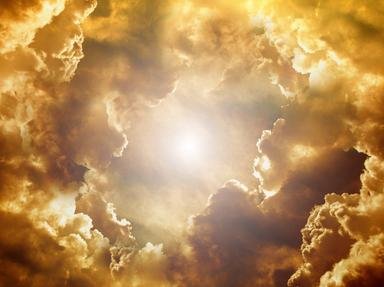Quiz Answer Key and Fun Facts
1. The sun hasn't always existed. Scientists estimate that the sun is about how old?
2. Our sun is classified as a "second generation" star. What does that mean?
3. Most stars are larger and more massive than the sun.
4. Ancient people were fascinated by the sun and what made it shine. Various ideas were put forward to explain how the sun could continue to shine for long periods of time, but none seemed satisfactory. In the twenty-first century we know that the sun releases energy by fusing hydrogen into helium. What natural force was thought to cause the sun to shine before nuclear physics provided an explanation?
5. Most ancient peoples believed that the sun, the moon, and the planets all revolved around the Earth. We now know that the sun is the center of our solar system, and that the Earth revolves around the sun. Who was the first modern scientist to propose that the sun is the center of our solar system?
6. We are very lucky that our sun is stable star, and that the amount of energy that reaches us is fairly constant. Nevertheless, there are regular variations in the sun's energy output. These follow a fairly regular cycle that lasts about how many years?
7. The sun is big - really big! Over one million Earths could fit inside the volume of the sun. Knowing that, can you tell me what percentage of the mass of the solar system is contained in the sun?
8. The sun is obviously the brightest object in the sky as seen from Earth. If you could travel through outer space, how far would you have to go before the sun could no longer be seen by the naked eye?
9. Because the sun is ultimately the source of the energy that makes life possible, it should not be surprising that it was worshiped as a god in many ancient cultures. Astrologers also took note of the sun, and believed that the position of the sun in the sky at the time of one's birth was the most important aspect of one's horoscope. In Western astrology, which of the twelve signs of the zodiac is said to be ruled by the sun?
10. While the sun has been around for a long time, and will be around for a lot longer, it won't last forever. What will be the ultimate fate of the sun?
Source: Author
daver852
This quiz was reviewed by FunTrivia editor
rossian before going online.
Any errors found in FunTrivia content are routinely corrected through our feedback system.

